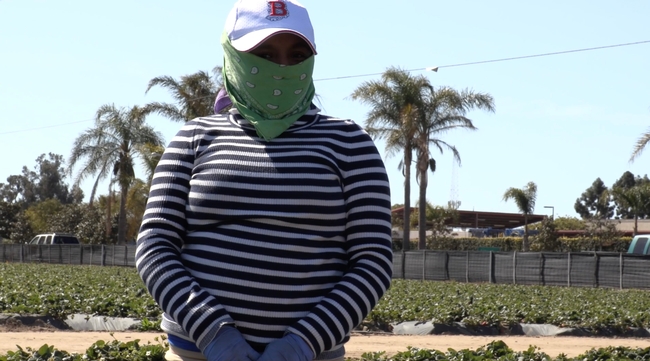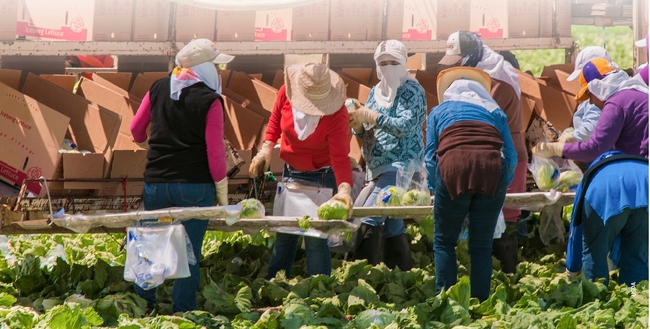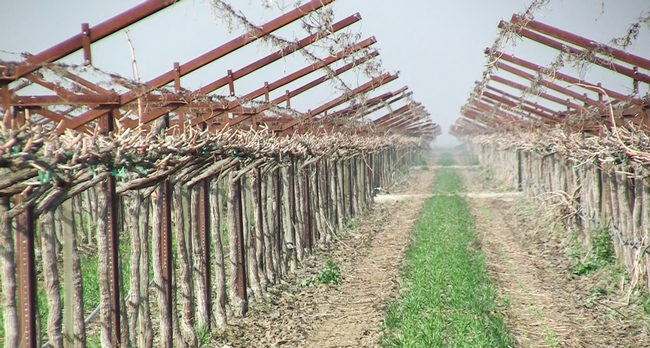Today, amid a pandemia-battered labor market and a deep crisis across the food industry chain, it is crucial to reduce barriers to employment and pay attention to the problem of sexual harassment. This problem occurs most often in low-paying, male-dominated jobs such as agriculture.
Recent research from the Division of Agriculture and Natural Resources at the University of California UC ANR found that 30 percent of female workers at nine wine industry companies in Napa Valley reported some form of sexual harassment at their current job. They are young women under the age of 40, several temporary employees who usually work in small groups throughout the camp where sexist and hostile jokes and comments are frequently heard.

- Sexual harassment in agriculture is a historically neglected problem that is gaining economic relevance in the current context of agriculture, an industry dealing with labor shortages.
- The lack of a workforce is a severe problem, considered by several experts as the main challenge in food production.
- The shortage of male migrant workers would be even worse without increasing the female workforce.
"Women need to feel safe to be productive, and with the critical lack of labor in agriculture, this industry needs to make sure it retains these workers," Hobbs said.
Research indicates that between 40 and 75 percent of all working women in this country have experienced some form of sexual harassment, and this has not decreased since the 1980s. Even worse, the problem often occurs in low-paying jobs that men dominate.
Sexual harassment is unwanted behavior that the victim perceives as offensive that threatens their well-being. "It's a barrier that not only harms the victim but other workers at the company, and I should add that sexual harassment is not something that happens only to women but also to men, but this was not the focus of our study," Hobbs said.

- Gender-based harassment – jokes, comments, or suggestive stories that are offensive, or different treatment for being a woman (contempt or ignoring the woman)
- Unwanted sexual attention – requesting a date or inviting drinks even though you were told NO. Touching or groping the person.
- Sexual coercion – bribing the employee in exchange for engaging in sexual behavior (offering a promotion in exchange for a sexual favor)
- Hostile Sexism - comments or acts that are interpreted by women as sexist (for example: "Women are easily offended"; "women do not appreciate everything that men do for them"; "Women exaggerate the problems they have at work."
In agriculture, labor shortages are not a new problem. Since before the pandemic, they have been present and have been reduced thanks to the increase in women workers.
In 2017, Napa Valley vineyards employing an average of 100,000 workers had a shortage of 12 percent workers, and this would have been worse without the workers. "More women are working than there were 20 years ago, and this change in the gender of workers that I describe in Napa is also happening to some degree on the California Coast," he says.
The research highlights that between 2013 and 2016, the proportion of working women increased in Napa Valley vineyards from 10 to 25 percent.
"The economic motivation is, therefore, stronger than ever for agricultural companies to reduce barriers to employment and retain female workers, and sexual harassment in the workplace is a barrier to employment," Hobbs says. These women are indispensable to fill the vacancies that used to be filled by immigrant workers that have declined in recent years."
The research involved 195 men and 100 women, all Hispanics. The nine companies surveyed have more than 50 employees each; in seven of them, subcontracted labor is used, and in 2 vineyards, their employees are directly employed. The survey was conducted in English and Spanish. Of the 30 percent of women who reported experiencing sexual harassment, 9 percent said unwanted sexual attention and 1 percent sexual coercion.
"The fact that harassment is more prevalent among young women is an indicator that harassment is an obstacle to expanding the workforce because they are women who are starting to work," he said.
He explained that the relatively low percentage of sexual harassment found in this research compared to other research could be because the wine industry usually offers better wages and better working conditions than other workplaces.
Hobbs concludes that this research is an approach to a complex labor problem that requires more attention, and possibly the next step will be to analyze the overall work environment, addressing the hostile sexist attitudes of workers and evaluating the entire organization, which seems to be the most promising thing to reduce harassment in agriculture. "The conditions in which the workers are currently working makes them more vulnerable, the training help, but there are changes that must be executed. Changes have to be made throughout the organization," concluded the expert.
Additional resources:
This investigation was carried out thanks to the collaboration of the Western Center for Agricultural Health and Safety at the University of California, Davis, offers all kinds of training on agricultural safety. An integral part of this report was a podcast where Teresa Andrews, the Center's Education and Community Outreach Specialist, talks extensively about what harassment is, what the law says about harassment, and what to do when you have been bullied. Here's the link to the podcast.

